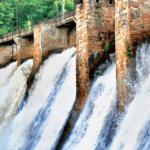The Nepal Constitution promulgated on 20 September 2015 marks a historical end to a seven-year transition that began after the popular uprising against an absolute monarchy in April 2006. The Constitution formally declares Nepal as a Federal Democratic Republic and accepts secularism. This Constitution is the seventh one since 1950 when the autocratic 104 year Rana regime came to an end, and the first constitution was written by a Constituent Assembly elected by its citizens.
Nepal’s constitution process has been one of the most expensive in the world that included the cost of elections to two Constituent Assemblies; comprising of 601 members and spending over $ 400 million. The economic development and reforms agenda have therefore been adversely impacted while the focus remained on the constitution. The adoption of the constitution however puts an end to the political revolution and marks the beginning of political stability, which is likely to facilitate a positive business and investment environment thereby leading to economic growth and development. A few of the key issues have been highlighted below.
How will the disgruntled sections be accommodated?
The populated southern plains of Nepal with a Madhesi majority and ethnic groups are not happy on the demarcation of federal states. The Terai areas have been observing protests for over a month, and it is now essential to quickly address and resolve these issues to ensure that political turmoil does not reemerge. This is particularly important, as the Terai is the main region for industry and trade. The upcoming weeks will be critical as it remains to be seen whether disgruntled forces will be integrated into the constitution and implementation process, as failure to do so could lead to another phase of political upheaval, marked by protests and violence.
India’s reaction and the Bihar elections?
India plays a critical role in Nepali politics both through the official government as well as multiple informal channels. Underlying concerns remain on how the developments in Nepal will impact the forthcoming elections in the state of Bihar in India; which is critical as it is a litmus test for the current Narendra Modi led BJP government.
Nepal remains a socialist country
All political parties in Nepal embrace socialism and compete on how left to the center they can go. Therefore it is quite natural that socialism is defined as the economic ideology in the preamble. This has not been removed despite demands from the private sector and investor communities. Socialism can be defined in different ways – it could have a Nordic definition or a North Korean one, it will be important to see how Nepal pursues socialism. The emphasis on domestic investment and no reference to ambitions on globalizing practices makes people skeptical about Nepal’s likelihood to pursue economic reforms and substitute its dependency on aid towards economic activities that boost investment.
The immediate challenge now lies in the implementation of the constitution, establishment of a federal commission for the demarcation of federal boundaries and subsequently the development of supporting acts and policies. It is now even more essential to establish a strong rule of law and governance. If Nepal has been on your radar, then it is a good time to delve deeper into the opportunities and if not, it is time to look at this country that is land linked with two global economic giants China and India.
Click here to view a copy of the Nepal Constitution – NEPALI, ENGLISH





